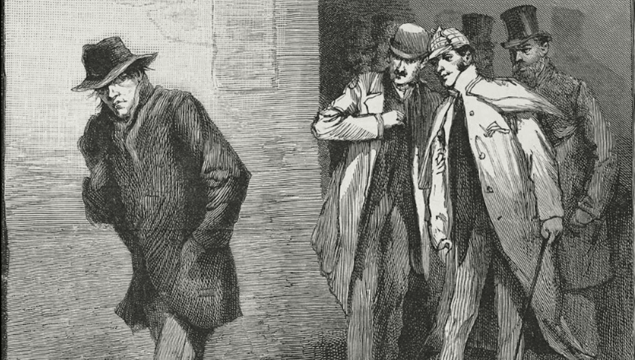
An illustration from the period around the Jack the Ripper investigations, from London Illustrated News.Public Domain
On September 27, 1888, an anonymous letter arrived at the offices of the Central News Agency in London. The letter, written in red ink, bore the chilling signature "Jack the Ripper.
In the autumn of 1888, the streets of London's East End were gripped by fear as a series of gruesome murders unfolded, leaving a trail of terror in their wake. The enigmatic killer responsible for these heinous crimes would soon be known as "Jack the Ripper." This name, now synonymous with the very concept of an unidentified serial killer, first came to public attention in an anonymous letter sent to the Central News Agency.
Jack the Ripper was the pseudonym given to a notorious unidentified serial killer who terrorized the Whitechapel district of London, in 1888. His reign of terror is believed to have lasted for just a few months, but the brutality of his crimes and the fact that he was never apprehended have made him one of history's most enduring mysteries.
Between August and November of 1888, Jack the Ripper claimed the lives of at least five known victims: Mary Ann Nichols, Annie Chapman, Elizabeth Stride, Catherine Eddowes, and Mary Jane Kelly. These women were all prostitutes, and their murders bore a chillingly similar pattern: each victim was found with their throats slit, often with horrific mutilations to their bodies. The gruesomeness of the crimes and the fact that they seemed to escalate in brutality sent shockwaves through the city.
On September 27, 1888, an anonymous letter arrived at the offices of the Central News Agency in London. The letter, written in red ink, bore the chilling signature "Jack the Ripper." In it, the author claimed responsibility for the murders and taunted the police, stating, "I am down on whores, and I shan't quit ripping them till I do get buckled."
The publication of the "Jack the Ripper" letter sent shockwaves through London and fueled public hysteria. It was not the first letter received by the authorities claiming to be from the killer, but it was the one that captured the public's imagination. The name "Jack the Ripper" quickly became associated with the mysterious murderer, and newspapers began using it to refer to the killer in their reports.
The letter also heightened fear in Whitechapel and intensified pressure on the police to solve the case. It led to an influx of tips, hoaxes, and theories, making it even more challenging for investigators to separate fact from fiction.
The "Jack the Ripper" letter had a profound impact on the investigation. It compelled the police to take the threats seriously, and they increased their efforts to apprehend the killer. However, despite their best efforts, Jack the Ripper remained elusive. The case ultimately went cold, and the true identity of the killer was never definitively established.
The name "Jack the Ripper" has endured for over a century, becoming a symbol of unsolved mysteries and the darker aspects of Victorian London. Numerous theories and suspects have been put forward over the years, but the true identity of Jack the Ripper remains one of history's greatest enigmas.





Comments